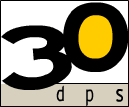Don't Kid Yourself: Native Advertising is NOT Content Marketing
 As traditional publishers like trade journals, magazines, newspapers, etc. have continued to struggle to preserve their place in the world post-internet, more and more have turned to native advertising to fill the gap resulting from decreased distribution and faltering traditional ad revenues. Native advertising largely resulted from these publishers' realization that the effectiveness of interruption-based advertising was demonstrably in decline, and that consumers were increasingly looking for non-salesy information as they did their research and made purchasing decisions.
As traditional publishers like trade journals, magazines, newspapers, etc. have continued to struggle to preserve their place in the world post-internet, more and more have turned to native advertising to fill the gap resulting from decreased distribution and faltering traditional ad revenues. Native advertising largely resulted from these publishers' realization that the effectiveness of interruption-based advertising was demonstrably in decline, and that consumers were increasingly looking for non-salesy information as they did their research and made purchasing decisions.
In an effort to save their publications from financial ruin,they are now offering their publishing platforms (whether print or digital) to help advertisers get their word out in a format that is more palatable to consumers. While they may at times offer to provide partial or full authorship of this content, typically they rely upon the advertiser to produce the content that they will then publish. This can indeed be good news for content marketers as it offers one additional platform for disseminating their content. However, don't kid yourself, native advertising is NOT content marketing.
The Distinction Between Native Advertising and Content Marketing
Joe Pulizzi, arguably the father of the term content marketing, said it well:
"If you pay for placement, it’s advertising.
If you pay for placement of valuable, relevant content in a format similar to the third-party site, it’s native advertising.
If you don’t pay for placement, the content is not advertising."
When advertisers “pay to play” by purchasing placement of content on platforms outside of their own media, it's native advertising. The content is usually longer form (to look like an article), may contain some very useful information, and typically avoids ad copy that directly promotes the advertiser's product or service.
A content marketer may utilize native advertising as one platform for distributing content, but the primary distribution of content is always on a platform the marketer owns, e.g. their website or blog. Content marketing is not dependent upon publishers to research, write, and distribute content. Rather, content marketing involves the production of rich, meaningful, helpful, instructive, and unique material that is developed by the brand (or its agency) and is distributed on a channel or channels it owns, in order to also own the relationship with the consumer. This relationship should be considered precious to a business, and abdicating the care and feeding of that relationship to a publisher is nothing short of neglect.
Why It Matters
In decades past, paid media was the primary means by which marketers communicated their offering to the public. Today, content marketing is proving to be an incredibly effective way to not only get your message out, but more importantly, to win "true believers" and raving fans. Publishers, increasingly aware of the "competition" that content marketing represents to them (i.e. having their customers publishing their own content), are now increasingly using the term "content marketing" to inaccurately describe what is actually native advertising.
The reason it matters is that if you are relying on native advertising instead of committing to content marketing, you are likely not only wasting a great deal of money but are also missing the opportunity to own you own contact list. The more you can focus on developing your own mailing list (especially your email list), the more effective your marketing and sales efforts will become. And if you pair these efforts with a marketing automation tool like HubSpot, you can realize an outstanding return on your marketing investment.
Seeing Is Believing
We've been in the marketing and advertising business for a very long time, but we only made a total commitment to inbound and content marketing a few years ago. In that time, we have seen some remarkable results, especially for our clients. They are soaring in search engine rankings, their sales pipeline is consistently full, and the overall effectiveness of their marketing efforts is demonstrated through steady increases in revenues.
And trust me, they didn't achieve this by relying (exclusively) on paid advertising. In fact, our clients' budgets in mass media advertising and native advertising are meager when compared to their investment in inbound and content marketing. If you'd like to explore how 30dps can help rock your world with content marketing while becoming less dependent upon expensive paid advertising, don't hesitate to contact us!

